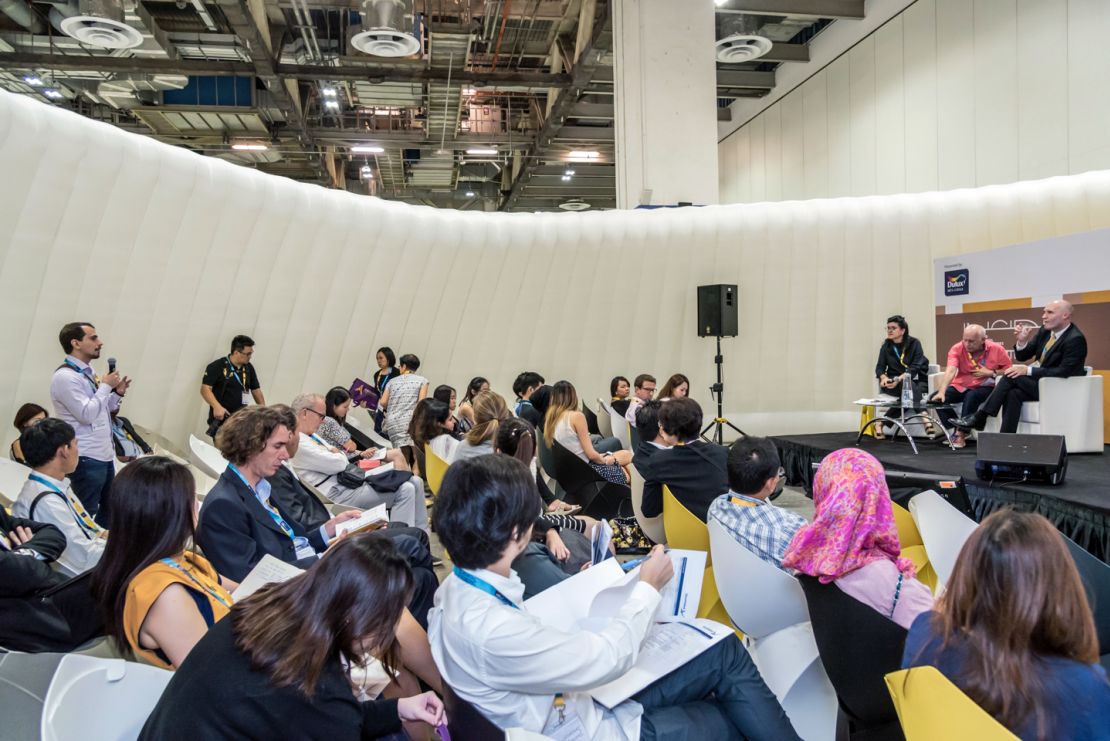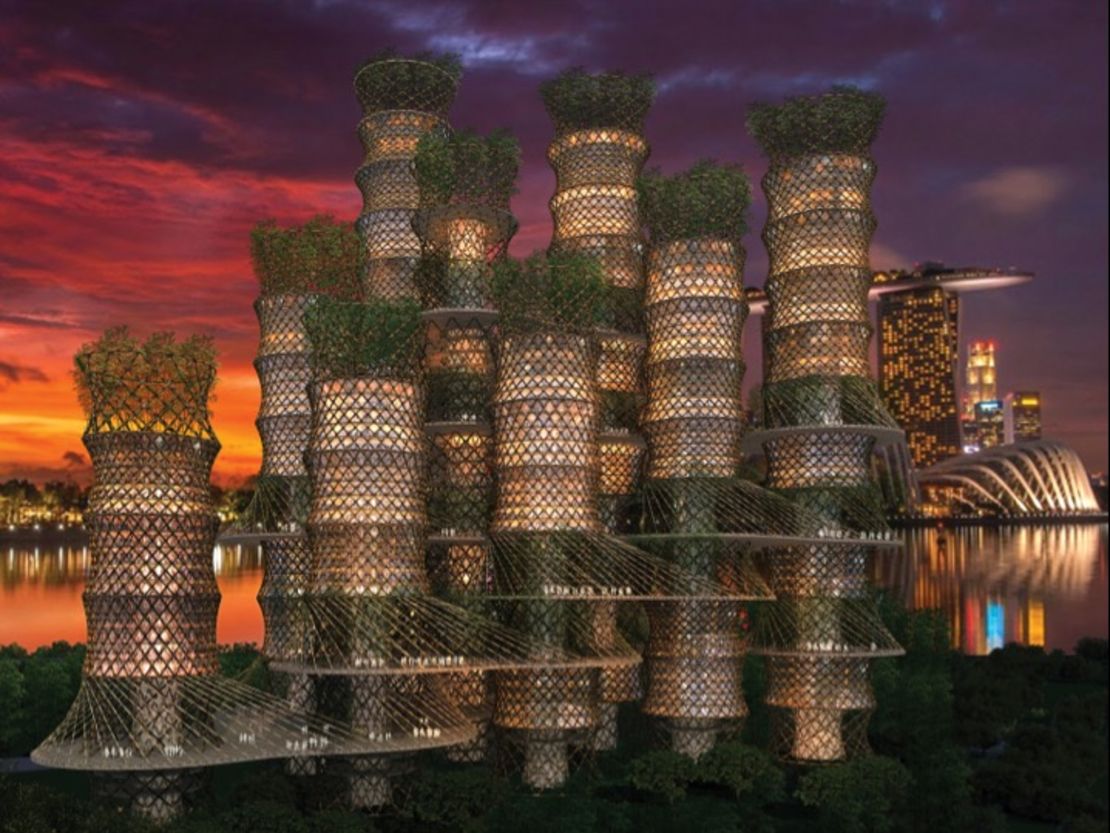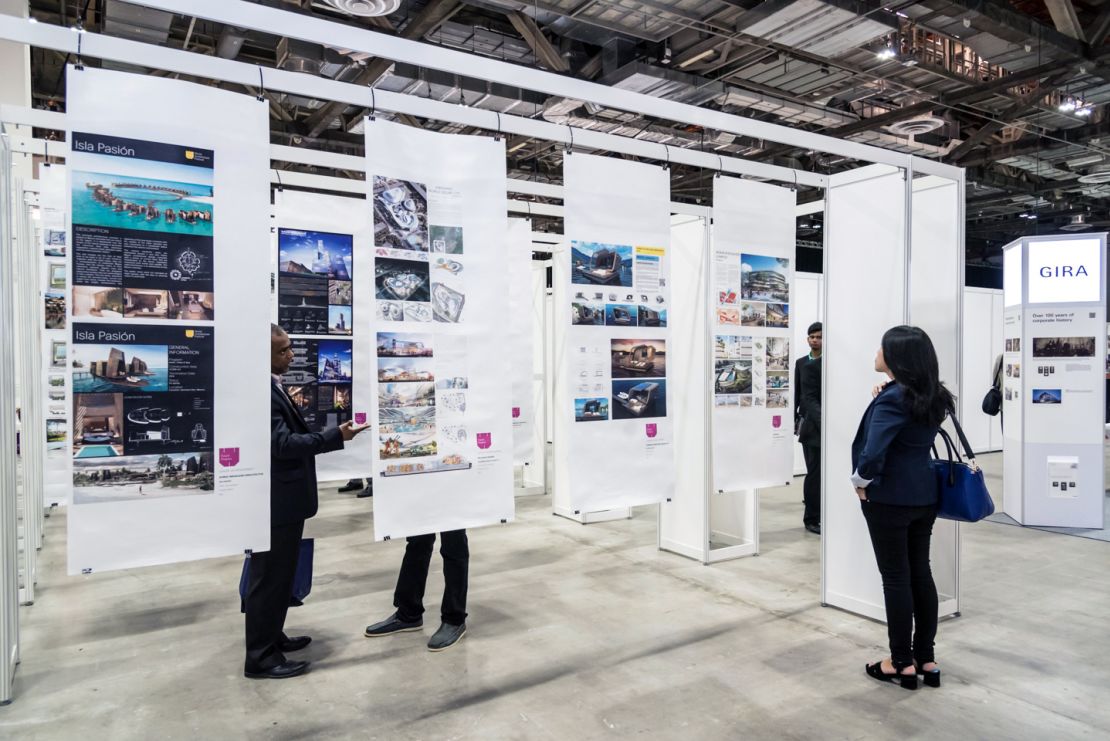If you want to understand what the city of the future might look like, a good place to start would be this week’s World Architecture Festival (WAF).
In the exhibition hall of Singapore’s glitzy Marina Bay Sands resort, over 2,000 architects from the world’s top firms and emerging practices have gathered together to present their designs, ranging from the incredible (buildings that float atop the ocean), to the outlandish, (a skyscraper made from bamboo).
But the festival is more than just an exhibition showcase, it’s also a chance for the industry to recognize the very best in architectural design.

Throughout the three day event, competing architects present their ideas in 20-minute blocks in front of a live audience, in the hopes of impressing a panel of expert jurors. The process, as WAF program director Paul Finch puts it, is somewhat reminiscent of a dog show.
“It’s the best in breed and the best in show,” says Finch, referring to the 31 competition categories and 338 entries.
“On the final day of the festival, all the category winners, present again to ‘super jurors’ – the great and good of the architecture and design world. From that we get the World Building of the Year, the Future Project of the Year, the Interior Design of the Year, and the Landscape of the Year. The very best of the best.”
World Building of the Year
This year’s top honor, the coveted ‘World Building of the Year’ was awarded to the Interlace – an ambitious residential development in Singapore – by Netherlands-based OMA and Buro Ole Scheeren from Germany.
The mixed-use structure is located within a green belt area of the city-state’s southern ridges, and claims to challenge traditional notions of what it means to live in a modern tropical metropolis.
'The Interlace' crowned World Building of the Year 2015
Rather than building upwards – as is so often the case – the Interlace (as its name would suggest) expands outwards, through an expansive interconnected hexagonal lattice of apartment spaces that are integrated with the natural environment.
Buro Ole Scheeren partner Eric Chang said the firm wanted to conceptualize the design as more of a village: “It’s a large scale project – it’s 170,000 square meters and accommodates 1,040 units. So we were thinking: ‘How can we build more for a village rather than for housing?’
“In our design, there’s multiple opportunities for social connectivity, a real sense of community, the presence of nature, and generous space.”
As well as making full use of green and open spaces, with large roof gardens, cascading balconies and expansive shared courtyards, these interlocking blocks incorporate a variety of sustainable features.
“We looked at a lot of mainly passive designs strategies,” says Chang. “We looked at quantifiable analysis on daylight control, solar radiation, wind movements, heat gains, solar exposure, which courtyards would get the most heat gain, and the planning of activities were organized around these factors.”
But the winning result was by no means straightforward, as Professor Sir Peter Cook, the founder of 1960s avant-garde architectural group Archigram, and one of the event’s ‘super jurors’ explains: “It’s very difficult, with so many beautiful, quite worthy projects.”
“I think you look for a power of impact. It’s something you know you’ll remember in two years’ time. It’s a game-changer.”
“So much of architecture is predictable, particularly housing. Another block, another block, another block. But this isn’t ho-hum here we go again.”
Looking to the future
The congregation of the industry’s best and brightest gives a rare chance for architects and designers to share ideas, with this year’s keynote lectures tackling core questions such as the future of height, design, localizing food production, building in extreme climates, and intelligent materials.
Scott Duncan, an architect at Skidmore Ownings and Merrill (SOM), who led a discussion exploring how technology and local height regulations impact on building design, believes the aspiration to build taller is not going away anytime soon.
As part of the team involved in the construction of the 99-story Pertamina Energy Tower in Indonesia’s capital Jakarta, Duncan is something of an expert on the subject.
“Modern cities – especially those in developing economies – understand how an iconic building can define them in the world.”
But Indonesia faces its host of climate change woes, so SOM puts forth this idea: what if, instead of structural considerations, they allowed saving energy to drive the design? Could Jakarta’s skyline be defined by a symbol of renewable energy?
“We have no choice but to confront climate change,” says Duncan. “So our entire building form, and detailing and tech, was all driven by this net zero energy goal – doing a building that didn’t consume anymore energy than it generated on its own.”
That energy source, explains Duncan, will come from local volcanoes. Through the conversion of geothermal energy, the building will be the world’s first self sufficient skyscraper.
Future of Food
Rahel Belatchew of the Swedish urban design practice, Belatchew Aritekter, highlighted an experimental proposal of how urbanites in Stockholm could one day get their food.
Pods of insect farms – because in the future, insects, rather than livestock, will be humanity’s main source of protein, she claims – would be located at traffic intersections. This would reduce our dependence on meat and our need for farmable land.
The scarcity of resources also inspired conversations around materials – and how to become more sustainable.
New, innovative materials

Architects, here, are looking to technology and green materials to reduce energy consumption.
Bamboo was recently recognized by the United Nations as a green building material that can help combat climate change.
Carlos Gomez of CRG Architects, proposes using the strength of the material, in skyscraper form. According to Gomez, what if buildings not only reduced their emissions, but actually absorbed CO2?
Bamboo has been used for thousands of years – but Gomez is one of the first to think of it on a larger scale – in the form of a skyscraper.
Optimal conditions
Though many might scoff at the idea – even the more tenuous of concepts are worthy of thought, says festival curator Jeremy Melvin.
That’s just the nature of architecture: “Architects always think about the future, and mostly in an optimistic way. You have to project something that you hope will be better than what exists.”

But the conditions have to be right.
“To make great architecture, you need space, political will, vision and money,” says Melvin.
Singapore, then, is not only an appropriate place to hold the festival, but an example to the world.
“Singapore is an interesting place for architecture. It has a powerful planning framework, and its been influential on how its grown and the opportunities its given to architects,” says Melvin.
WAF director Paul Finch adds, “Everyone that has been here, is incredibly impressed by the design planning integration that is part of Singapore’s society and part of the Singapore government’s ethos for the past 50 years. Consequences of well planned city traffic, housing and public transport finds a happy mix. There are lessons here for both old and emerging cities on how Singapore has done it.”



































